Day Fifteen - International city of World Peace & the Castle Town, Hiroshima
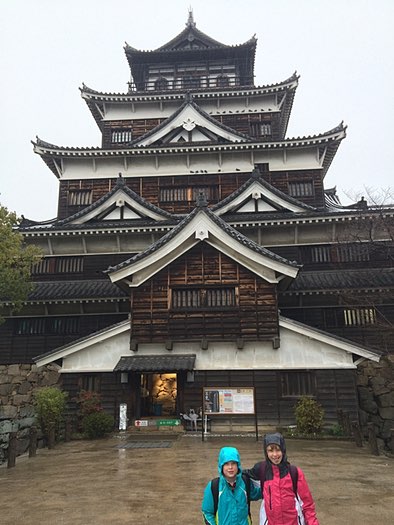
Terumoto built a castle in Hiroshima as he felt the location was a good hub for river and sea trade and it was important to control the mouth of the river for the city’s success and rule over the Chugoku region. The Hiroshima Castle was constructed 1589, it is an early flatland castle (Hirajiro). The Ota river was used as a natural moat to ferry stones from the inland sea for use to build the castle.
The labour required to build the Castles in Japan amazes us and the detail, such as that on the end of roof tiles, is impressive. The ornamental roofing tile is laced with gold. At Hiroshima Castle, the ends of the ridgepole are decorated with Shachi, which are fabulous fish shaped ornaments. We thought this was rather appropriate for a castle surrounded by sea/river.
We dressed up and pretended we were Samaurai protecting the Castle and also dressed up rather fancy in a Kimono.
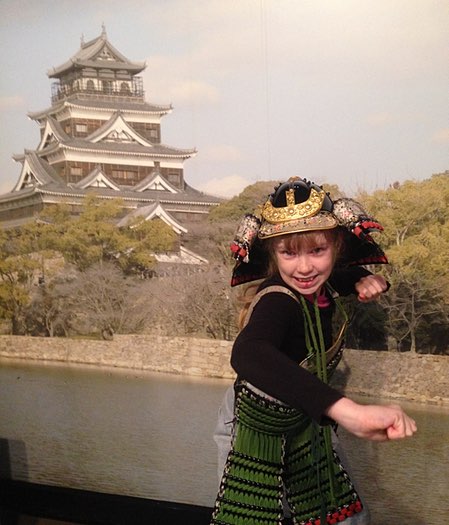
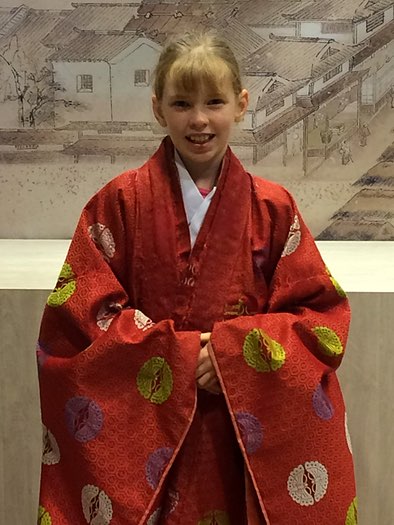
The local area grew plants that were not affected by salt water such as sweet potato, figs, locus flower and spring onion.
We looked upon the small Samuari homes. They were neat with their tatami mats and all in one kitchen storage box/table.
There was a lot of swords on display, but no photos could be taken.
The 5th floor gave us a view of Hiroshima. We even looked back across to our hotel.

As we walked towards the A-Dome we stopped to watch a Christmas concert by the Hiroshima Boys Chorus Choir. They sang songs we recognised such as Joy to the World, Jingle Bells, Rudolph the Red Nose reindeer and We wish you a Merry Christmas. Our favourite was Rudolph the Red Nose reindeer.
We’re beginning to feel like it’s Christmas!!
The next visit was very humbling. We reflected upon the damage left by the Atomic bomb on August 6, 1945 at the Genbaku Dome-Mae (Atomic Bomb Dome).We could see the building was severely damaged and burnt.
Next we found the Children’s Peace Monument. There is a story attached to the construction of this monument. A young girl was injured as a result of the atomic bomb but lived only to find out when she was 10 years old that she had leukaemia. She believed that if she madder 1000 origami paper cranes she would survive the illness but unfortunately about a year later she passed away.Children from her school wanted to honour her and other children who lost their lives as a result of the atomic bomb by making the remaining cranes and establishing the Children’s Peace Monument.
The pond of peace was serene with the flame of peace which will remain lit until there are no more atomic bombs in the world.
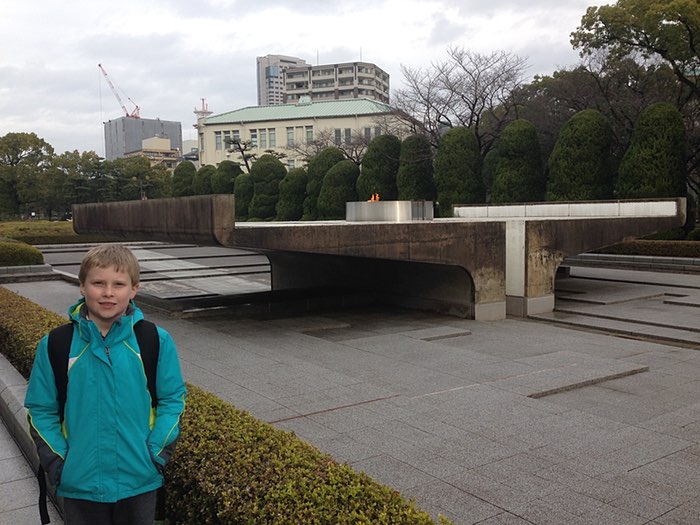
We entered the Hiroshima Peace Memorial Museum. The realisation of the devastation brought tears, described as a nightmare that came true. We continued to read stories of loss, searching for loved ones and how it all unfolded, all of which pulled at the heart strings and left us pondering why this was necessary. Was it the only way to stop the war? Was it really used as a data collection/training exercise? How could such a traumatic and painful action that affected thousands of lives be justified?
The Peace Memorial Museum certainly conveyed the horror of nuclear weapons and desire for world peace.We hope that world peace is achieved too.
When choosing what to do for dinner tonight we decided to look for a place that had a queue as we figured it must be good. Ordering was so easy as inside the door was a machine which displayed all the menu items in English and allowed you to pay.
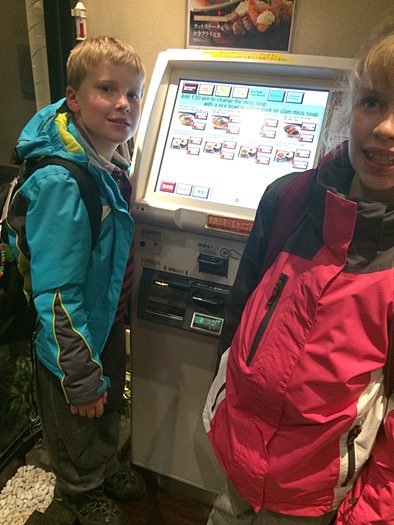
James and Jennifer enjoyed making their own selection and feeding the money into the machine. We enjoyed a scrumptious dinner of soup and pork cutlets on rice with a Japanese sauce that you poured over the top and James enjoyed Chicken and prawn cutlets with rice and soup.

Whilst we were having dinner a Christmas tram passed by the window, it looked great with lights and Santa on board.
